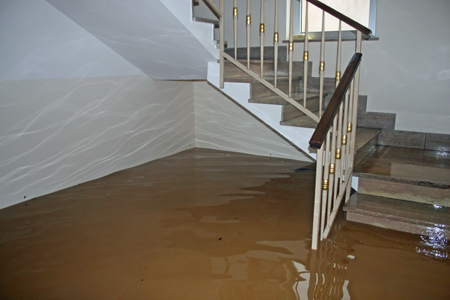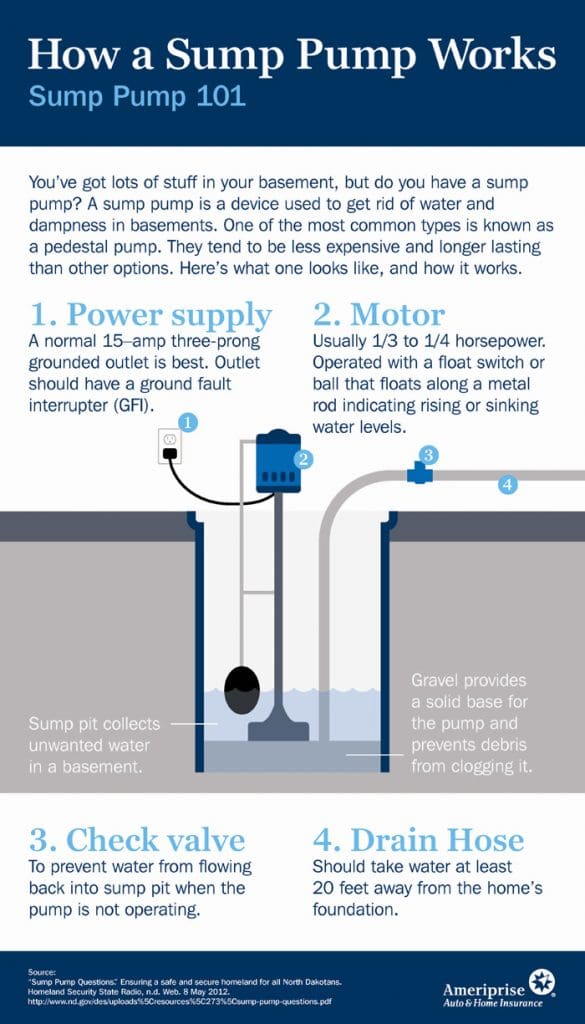Sewer Backup Causes and Prevention
A primary cause of a flooded basement is a sewer backup.
Sewer backups occur when sewage from sewer lines back up into your house or business.
Usually basements flood from sewer backups when the sewage water comes up from the drains.
This article will explain what causes sewer backups and how you can prevent them.
Causes of Sewer Backups
- Rainfall
- Tree Roots
- Sanitary Main
- Grease
- Toilet Paper and Foreign Objects
Rainfall
During heavy rainstorms, the excess water inundates public sewer systems with groundwater and stormwater flow entering the sewer lines. A sewer backup will occur because the sewer lines get too full and can not handle the overflow.
Tree Root Blockages
As trees and shrubs grow, the roots expand to seek more moisture. As the roots grow, they can crack the sewer line and eventually cause a blockage.
Sanitary Main Blockage
In some cases, a blockage can occur in a city sanitary main causing a back up into homes and businesses.
Grease
Another major cause of sewer backups occurs when animal fat is dumped down the drain. When the grease cools, it will attach itself to the walls of the sewer pipe, causing other objects to stick to the grease eventually leading to a blockage.
Toilet Paper and Foreign Objects
When too much toilet paper, paper products (paper towels, disposable/cloth diapers, and feminine products) or foreign objects are flushed down the toilet, they can get stuck when they meet a bend in the sewer line causing sewer waste to to stick to the objects, resulting in a blockage and eventually a backup.
How To Prevent Sewer Backups?
Dispose of Grease Properly
Do not pour cooking oil into your sink, use a heat resistant container and dispose of it properly.
Dispose Paper Products Properly
Since paper towels, disposable/cloth diapers, feminine products, and other small objects down the toilet do not break down quickly, leading to clogs, do not try to flush these items down your toilet.
Replace Pipes
Older homes are particularly susceptible to sewer backups because there are usually older trees and shrubs that have roots seeking more moisture leading to the eventual crack in a sewer line and blockage. To prevent this, you should cut the roots periodically and may want to consider replacing the line and tap pipes with plastic.
Proper Drainage
One of the most effective methods to prevent flooding is to ensure that there is proper drainage around your property. You want to ensure that there is a slope away from the property so water flows away. In addition, ensure that the downspout drains away from your property and periodically clean your eaves-troughs to prevent them from getting blocked.
Install Backflow Prevention Valves / Sump Pump
Backflow valves block the sewer line and prevent the flow of sewage backflows.
If your property is in a low lying location or near a river or lake, we strongly recommend that you install a sump pump. In addition to the utility during a heavy rain fall, sump pumps perform an important function during normal weather because they drain groundwater from under and around your basement floor. Ground water removal reduces the risk of basement floors cracking and shifting from the water pressure.
We recommend that you consult with your plumber for such an installation as it depends on your type of plumbing.
Two Reasons Sewer Backup Prevention Is So Important
There are two key reasons you want to prevent sewer backups.
First, preventing excess moisture from entering your home is the key to preventing mold growth.
Second, sewer backups are worrisome because sewer water is category 3 water and contains harmful bacteria that is hazardous to your health.
According to IICRC S500 Standard 3rd Edition, there are over 120 different viruses that can be excreted in human feces and urine and find their way into sewage:
These can include Rotavirus, causing severe and sometimes life-threatening diarrhea in children, Adenoviruses, causing respiratory and eye infections, and Norovirus, a significant cause of gastric flu or stomach flu. There are highly infectious parasitic agents like Giardia and Cryptosporidium that can cause chronic and severe intestinal diseases in both children and adults. Bacterial pathogens in sewage can include Salmonella, Shigella and Escherichia coli. These gram-negative organisms contain endotoxins that are released at the time of cell death and destruction. Endotoxins can cause respiratory inflammation, airway restriction, create the potential allergic and infectious disease responses and when inhaled they may adversely influence the central nervous system.
Steps To Take When Your Sewers Backup
If you experience a sewer backup, take the following actions:
- Call your city’s Sewer Maintenance Division and ask them to check the public lines to ensure that they are not blocked.
- Call a Professional Plumber to have the sewer line cleared.
- Clean up the area. Call a professional Disaster Recovery Service like Mold B Gone that specializes in water damage restoration, mold removal, and prevention. We have protective gear and equipment to clean up the area properly and most importantly understand that to prevent excessive mold growth we must remove all the water and begin drying out the area using air movers and dehumidifiers. All contaminated material must be either disinfected or removed permanently. If you begin the clean up process yourself, follow these safety steps and use rubber gloves, boots, protective clothing, and a respirator.
- Call your insurance provider within 24 hours of the sewer backup to begin the claim process.
The first 48 hours are crucial to preventing mold. Questions? Call Mold B Gone, 678-697-6267 or send us an e-mail.
How Do I Prevent A Sewer Backup?: Concerned about sewer backups? This article explains what causes sewers to backup and how you can prevent this from happening. Learn more!
Posted by Mold-B-Gone Remediation, LLC on Sunday, December 20, 2015
How Do I Prevent A Sewer Backup? https://t.co/iXjphiiD4q PLEASE RETWEET pic.twitter.com/nsWyOQAGWF
— Mold B Gone (@moldbgonega) December 21, 2015




